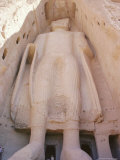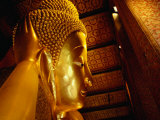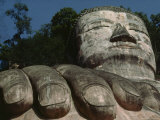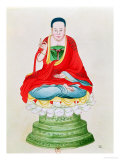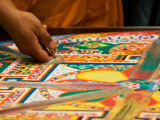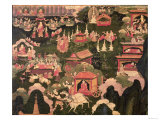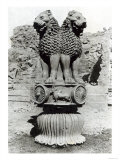|
|
Buddhism Educational Posters & Art Prints
for classrooms and homeschoolers.
|
social studies > theology > BUDDHISM POSTERS pg 1 | pg 2 < Dalai Lama < theologians < Buddha Quotes
|
|
Buddhism, a religion and a philosophy with approximately 360 million followers, spread from the subcontinent of India throughout Asia and the world.
Buddhism is based on the teachings of The Buddha, Siddhartha Gautam (566 to 486 BCE), a prince of the Shakyas.
The Buddha taught Four Noble Truths -
- that all worldly life is dissatisfying and contains suffering,
- the suffering is caused by desire rooted in ignorance,
- there is an end to suffering (Nirvana),
- and there is an Eightfold Path out of suffering -
Right Understanding, Right Thought, Right Speech, Right Action, Right Livelihood, Right Effort, Right Mindfulness, and Right Concentration.
Buddha is a title which refers "one who has awakened' to the true nature of existence and could be applied to those who free themselves from suffering and the cycle of birth, death and rebirth.
|
|
|
World Religions -
Buddhism
“For whether the world is eternal or otherwise, birth, old age, death, sorrow, pain, misery, grief, and despair exist. I am concerned with the extinction of these.” The Buddha
Buddhism developed from the teachings of Siddhartha Gautama, a Hindu prince from northern India who lived from 563 to 483 B.C. Siddhartha came to be known as the Buddha, or "the enlightened one." One of the central beliefs of Buddhism is that suffering always exists in the world. The Buddha taught that the only way to avoid suffering is to understand it and its source – desire. Today about 350 million Buddhists live all around the world. Most Buddhist live in the Asian nations of Japan, China, and Vietnam, but many live in the U.S.
As a young prince, Siddhartha enjoyed a life of luxury in his father's palace. But he grew curious about the world outside the palace walls. When he left the palace, he discovered a world filled with suffering. He thought he might find freedom from suffering by giving up the material comforts of life. He soon realized that self-denial was no more helpful to him in his quest than the luxury of the palace was. So, Siddhartha shifted his lifestyle to the "middle path" – he tried to live a life of neither self-denial nor excess. Doing so helped him to concentrate and understand the world around him. Finally, he gained enlightenment, or complete understanding.
Buddhists strive to follow the Four Noble Truths that the Buddha discovered upon gaining enlightenment: 1) life involves suffering; 2) suffering comes from the desire for things to be as we want them to be; 3) the only way out of suffering is to abandon this desire; 4) only a life of morality, concentration, and wisdom can lead to the end of desire and suffering. Nirvana, or release from desire and suffering and from the cycle of life, death, and rebirth, is the supreme goal of Buddhism.
Like Hindus, Buddhists believe in reincarnation, or rebirth, and karma, the consequences of human actions. But unlike most other religions, Buddhism has no God or gods. Buddhists do not think of the Buddha as God, but as a man who achieved the ultimate spiritual life and gained understanding of the world.
• more World Religions posters
|
|
|
|
Religions of the World -
Buddhism Poster
Poster Text:
Introduction: Buddhism began in India around 525 BCE and spread to the Asia Pacific an Sri Lanka. In the 20th Century, many Western people became attracted to Buddhist ideas about the individual path to truth.
Founder: Prince Siddhartha Guatama was born in 563 BCE. Prophecies foretold he would become a holy man. His father protected him from learning about death and suffering to try to stop the prophecy from coming true.
Enlightenment: Eventually, Guatama secretly left the palace and learned about poverty, sickness and death. In a place called Bodhi Gaya he understood that suffering comes from desire and that eliminating desire provides a pathway to freedom. He became known as the Buddha, the enlightened One.
Branches: Most Chinese Buddhist follow the Mahayana traditions, while Theravada Buddhism is found elsewhere in Asia. Westerners are often attracted to Zen Buddhism, which promotes meditation.
Leaders: Abbots of Buddhist monasteries are accepted as religious leaders and teachers. Lamas, such as the Dalai Lama, are thought of as reincarnations of former leaders and treated with great respect.
Key beliefs: The Buddha taught Four Noble Truths, Five Moral Precepts and an Eightfold Path to Enlightenment. He taught that natural suffering happens to everyone. People cause other suffering for themselves through desire. Non-attachment to worldy things ends desire, thus ending suffering.
Nirvana, karma and rebirth: Buddhist believe that the ultimate goal of life is to reach the state of being which they call nirvana, in which the person becomes at one with the universe. They believe we are all trapped on the whell of life, being reborn many times, using each life as an opportunity to achieve nirvana.
Three refuges: "I take refuge in Buddha." (The Enlightened One)
"I take refuge in Dharma." (Buddhist Teaching)
"I take refuge in Sangha." (Buddhist community)
Mandala: The Mandala, or wheel of life, is a symbol of the Eightfold Path to Enlightenment, and reminds Buddhist they are trapped in the cycle of birth, death and rebirth until they reach nirvana.
Tripitaka: The Tripitaka, or Three Baskets, are Buddhist holy books written in Sir Lanka in 30 BCE.
Visaya Pitaka - a code of ethics to be followed by monks
Sutra Pitaka - the Buddha's teachings
Abbadharma Pitaka - teachings about the way we look at the world
Quotation from the Dalai Lama
"Today was are so interdependent, so closely interconnected that without a sense of universal responsibility, a feeling of universal brotherhood, and sisterhood, and belief that we are all part of one human family, we cannot hope to overcome the damage to our existence - let alone bring peace and happiness."
• more Religions of the World, poster series
|
|
|
|
|
|
|
|
|
|
The lotus flower, an aquatic perennial plant, is an important symbol in Buddhism and Hinduism.
The flower emerges from the mud to seemingly float on top of the water, symbolizes purity of the body, speech, and mind above worldly attachment and desire. The seeds of lotus are viable for years: the oldest recorded lotus germination are from seeds 1300 years old that were recovered from a dry lakebed in northeastern China.
According to legend, Gautama Buddha was born with the ability to walk, and lotus flowers bloomed everywhere he stepped.
The Sanskrit the word for lotus is padma.
|
|
|
|
The creation and destruction of a mandala made from colored sand is a Tibetan Buddhist tradition symbolizing the doctrinal belief in the transitory nature of material life.
The “value” of the mandala is in the meditation of the experience of creation and destruction as the sand of the object is easily swept to the center and scattered to the nearest body of water or the four winds at the end of the ceremony.
• Create Your Own Sand Mandala: For Meditation, Healing, and Prayer [Box set]
|
|
|
|
Parinirvana, the final nirvana, is understood to be within reach only upon the death of the body of those who has attained complete awakening (bodhi) and is the ultimate goal of Buddhist practice.
Siddhartha Guatama is also known as Sakyamuni, as he was prince and sage of the Shakyas, a network of independent tribes near the foothills of the Himalayas.
|
|
|
|
|
|
|
Emperor Ashoka
b. 304 BCE, Close to 7th Aug
d. 232 BCE; Pataliputra, Patna, India
Ashoka embraced Buddhism after witnessing the destruction and mass deaths he caused in wars of conquest. He spread Buddhism across Asia and established monuments marking several significant sites in the life of Gautama Buddha. He is considered just after Gautama in the history of Buddhism.
Ashoka is known today as a devotee of ahimsa (nonviolence), love, truth, tolerance, vegetarianism, and a philanthropic administrator.
|
|
|
|
|
|
|
Buddhism Posters pg 2
previous page | top | BUDDHISM | Christianity | Hinduism | Islam | Judaism
Spirituality Bookshelf
|
|
I have searched the web for visual, text, and manipulative curriculum support materials - teaching posters, art prints, maps, charts, calendars, books and educational toys featuring famous people, places and events - to help teachers optimize their valuable time and budget.
Browsing the subject areas at NetPosterWorks.com is a learning experience where educators can plan context rich environments while comparing prices, special discounts, framing options and shipping from educational resources.
Thank you for starting your search for inspirational, motivational, and educational posters and learning materials at NetPosterWorks.com. If you need help please contact us.
|
|
|

















